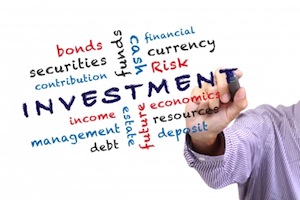 While most people think of the stock market when they think of investing, there is a whole other side that the majority of people do not really even consider. The fixed income sector, or the bond market, is just as big as the equities portion. These investments make up a good portion of most people’s portfolios; however, they are often very misunderstood. Using them properly can help to reduce the volatility in a portfolio, and often allow for better rates of return.
While most people think of the stock market when they think of investing, there is a whole other side that the majority of people do not really even consider. The fixed income sector, or the bond market, is just as big as the equities portion. These investments make up a good portion of most people’s portfolios; however, they are often very misunderstood. Using them properly can help to reduce the volatility in a portfolio, and often allow for better rates of return.
While owning a stock is like owning a small portion of the company, owning a bond is like lending money to the company. When purchasing a bond, the company agrees to pay you back after the term is expired. In the meantime, they will pay the agreed upon annual interest rate. Just like individuals who are a higher risk must pay a higher interest rate for their loans, companies that are a higher risk pay a higher interest rate. So when shopping for a bond, the high interest rates often means chance of failure. There are many other nuances that go into bonds, such as if they are callable, that are not too important for the average investor to understand.
What is important to understand is that you do not have to purchase individual bonds. Just like all other investments can be purchased in mutual funds, there are many bond funds out there. Just like other mutual funds, there are fees associated, usually to pay for the professional management of the fund. Buying one share of a mutual fund will get you invested in many different companies, thus spreading your risk out. While often thousands of dollars are required to purchase an individual bond, mutual funds are often generally at about $10-$20 per share.
A conservative investor might be tempted to put his or her entire portfolio in bonds. They are usually more stable than stocks, and most people realize that as they age and become more conservative they move closer to bonds. However, modern portfolio theory, and the efficient frontier, shows that that a portfolio of all bonds actually takes on more risk and has a lower yield than one that maintains some equities. The equities are needed to balance out the bonds. They will help to provide the quick growth and the bonds will help to provide the steady income.
Both equities and fixed income make up important parts of all portfolios. As you age and become more conservative, fixed income will start to play more of a part of your portfolio. Getting a good mix of high yield bonds, overseas bonds, and short and long-term bonds will help to diversify your portfolio even more. If you become so conservative that you are tempted to move your portfolio to 100% fixed income, it is time to start looking at CD’s and other cash vehicles. If you are staying invested, keeping about 20% in equities will give you the best return with the lowest volatility.

Great post! At my age I barely focus on these sorts of investments, as I have 40 years until I plan on retiring.
Good article and a great explanation. Have a great day!
Nice post and explanation of fixed income. I think a common misconception people have is that all bonds are safe, or that they’re not as risky as stock. There are numerous bonds out there that are more risky than being in stocks, so it just requires some education. In the end, as you say, it simply requires a decent mix of both to get decent diversification.
Nice post Sean. I’ve always done 20% in Bond Funds. I’m exploring the idea of using more preferred stock funds as well, as they earn a higher yield – but do take on more risk…
One fairly common misconception of fixed income is that it is a fixed value. By that I mean many investors think that they can’t lose money with fixed income but they can. Make sure you know what you are investing in before you invest.